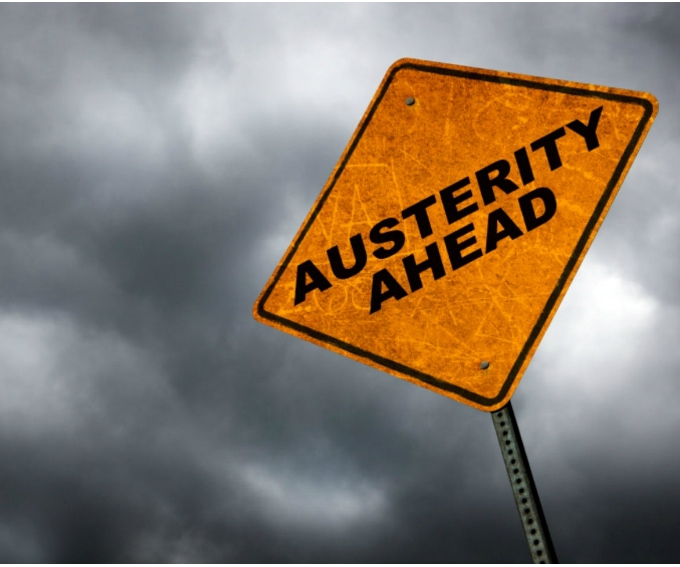This article was originally published on Richard Starr’s excellent The Nova Scotia Observer. Re-posted with permission.
KJIPUKTUK (Halifax) – Driving back to Dartmouth from last Tuesday’s provincial budget lockup at Pier 21 we were required, like the rest of the traffic, to slow down because of the construction project that has turned Water Street into an obstacle course. The bottleneck caused by the Queen’s Marque construction simply added insult to injury.

We “stakeholders,” like members of the legislature and everyday Nova Scotians of less exalted status had just been briefed on the revised provincial budget for 2017-18. It was the updated version of the one that was introduced in April but not passed because the Liberals preferred going to the polls. As the media quickly detected, this new version of Budget ‘17 wasn’t much different from the one it superseded.
After an election campaign dominated by health care and its deficiencies, the Liberals decided in the update that it was prudent to sprinkle a bit more money in that direction:
- $2.7 million to reduce wait lists for orthopedic surgery
- $1.8 million for youth mental health
- $800,000 each for cancer drugs and the opioid crisis
But the biggest single item of new spending in the revised post-election budget is $4.7 million to pay the inflated cost of cleaning up contamination on the site of the Queen’s Marque thing. This happens to be twice as much as the government plans to spend this year to scratch this particular stakeholder’s itch – supported community housing for people with developmental disabilities. The $2.1 million in new spending earmarked for this year may produce a dozen new homes – for a wait list exceeding 1,300. But housing for the wealthy, with a killer harbour view, must take priority.
The opposition in the legislature focused on the health issue. Jamie Baillie declared himself “pissed off” that there was no new money for primary care. Gary Burrill, noting several recent breakdowns in care, coincidentally equated the tiny increase in the $4.2 billion health budget with bringing a garden hose to a house fire.
Restraint overall
Others may look at the second coming of Budget ‘17 and wonder whatever happened to highway twinning. Given top billing in the April budget speech of Randy Delorey, it received nary a mention in Karen Casey’s address. Advocates for the disabled may also wonder why the April budget passage entitled “An Accessible and Inclusive Nova Scotia” hit the cutting room floor for the September edition. Of course, everything can’t be mentioned in a budget speech, especially when a good chunk of it was devoted to defending the pre-emptive introduction of the pre-primary program.
But it’s not the small details that are the most perplexing, it’s the overall thrust of the budget and the way that Stephen McNeil has framed it. The core of this budget and its predecessor is, to quote a conservative politician of another time and place, “acute, protracted restraint.” The only discernible overriding vision is of balanced budgets to produce a progressive reduction of the province’s debt-to-GDP ratio. But with no significant boost in GDP or revenue anywhere on the horizon, that will only be brought about by austerity, worse than what we have already experienced.
My piece about the April budget argued that the media and the opposition parties should expose the fact that the budget the Liberals were running on –in effect their election platform – was an austerity budget. To wit:
“Save for the election year spending blip, restraint is the Liberal plan right up until 2020, according to budget documents. After the 3.7% increase this year, balancing the budget would require limiting spending to a 0.7% increase in the 2018 budget and 1.3% in the 2019 budget. If Libs are actually running on the budget brought in this week they must be counting on no one bothering to read it, preferring instead that all people hear are the good news announcements and the magic words ‘balanced budget’.”
As it turned out, no one paid much attention to the fiscal plan during the campaign. The austerity promised in the budget’s four-year blueprint was glossed over as the opposition parties fashioned their campaign platforms on the April budget’s shaky fiscal structure. That budget had as its foundation the unsustainable suppression of public sector wages. The updated budget framework is based on that same cracked foundation, and it has become even more ramshackle.
As the NDP’s Dave Wilson put it, the Liberals have created a budget to fit their narrative, and that narrative is fiscal restraint. It would be possible for the Liberals to interpret their re-election with a significantly reduced majority as a backlash against their handling of health and their bullying tactics toward teachers and other public sector workers. Instead, they see their narrow victory as vindication of their tight-fisted ways, proof as the Premier put it on budget day that “Nova Scotians want us to live within our means.”
Rough future
So as a result the government continues with a fiscal plan with one constant – a balanced budget – and two variables – expenditures and revenues.
As for expenditures, the projected increases are even less in the update than they were in the April edition – 0.3% (down from 0.7%) next year and 1.1% (down from 1.3%) the following. No other government in the country is planning to inflict this level of austerity on its citizens, according to fiscal tables published last week by RBC.
Only New Brunswick and the depressed, oil-reliant provinces of Saskatchewan and Newfoundland even come close to matching Nova Scotia’s commitment to restraint. Indeed, the Liberals are trying to outdo themselves. When accounting adjustments are excluded from the calculation, the McNeil government increased spending an average of 2.7% a year between 2013-14 and 2016-17 – more than twice the average increase they are projecting for the next three years.
Budget papers provide no specific explanation for next years’ minuscule increase in spending – an increase that is in fact a spending cut, given 2% projected inflation. But the inference is that to keep the budget balanced, one variable – expenditure – has to match the other variable – revenue. The needs of the people for government services aren’t in the equation.
And unfortunately, revenues are expected to decline in 2018-19. There are three reasons for the drop, one of which is a one-time accounting adjustment for the Convention Centre. The second factor is tax cuts – $15 million to small business and $85 million for individuals.
The wisdom of cutting taxes while starving public services is certainly questionable, but could be justified if economic growth gave promise of increasing revenues. Sadly, there is a near absence of real economic growth next year –projected at 0.5%, down from 0.8% that was expected five months ago. The stagnant economy is the third reason for next year’s revenue decline. And the budget projects little improvement in the economy in 2019 and 2020, resulting in revenue growth averaging only about 2% a year.
So that’s the bottom line of the 2017 budget. As long as a balanced budget remains the political holy grail and the economy produces little revenue growth there will be intense pressure on public spending. Unless the Liberals can pull more accounting tricks out of a hat – or there is an unexpected windfall from the federal government – we are in for a very rough ride over the next four years. But then, we will always have Queen’s Marque.
Richard Starr is a former journalist, civil servant, political hack and seventh generation Nova Scotia. He is devoting his retirement to family, volunteer activities and writing about subjects that interest him and, he hopes, others at the Nova Scotia Observer. His most recent book “Equal as Citizens: the tumultuous and troubled history of a great Canadian idea” is about the history of equalization and the fiscal transfer system in Canada and came out in 2014.
If you can, please support the Nova Scotia Advocate so that it can continue to cover issues such as poverty, racism, exclusion, workers’ rights and the environment in Nova Scotia. A pay wall is not an option, since it would exclude many readers who don’t have any disposable income at all. We rely entirely on one-time donations and a tiny but mighty group of dedicated monthly sustainers.



